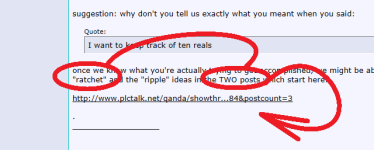RSLogix 5000 Compact Logix controller
Could someone give me an explanation or post a link to an explanation for the use of FFL and FFU instructions
In particular, I don't know what they're asking for with the control parameter
I want to put 10 REAL s in a FIFO stack
I don't get much outta the help ... seems that it shouldn't be too hard, but I'll be durned if it's soakin into this ol skull
thank you
Could someone give me an explanation or post a link to an explanation for the use of FFL and FFU instructions
In particular, I don't know what they're asking for with the control parameter
I want to put 10 REAL s in a FIFO stack
I don't get much outta the help ... seems that it shouldn't be too hard, but I'll be durned if it's soakin into this ol skull
thank you





